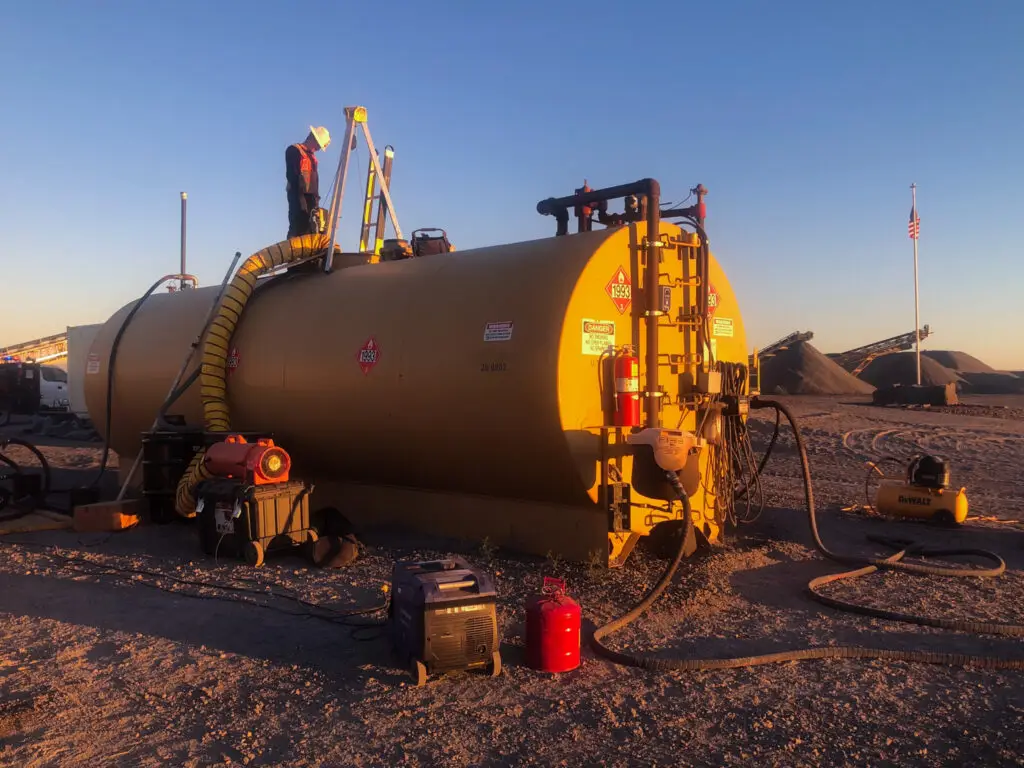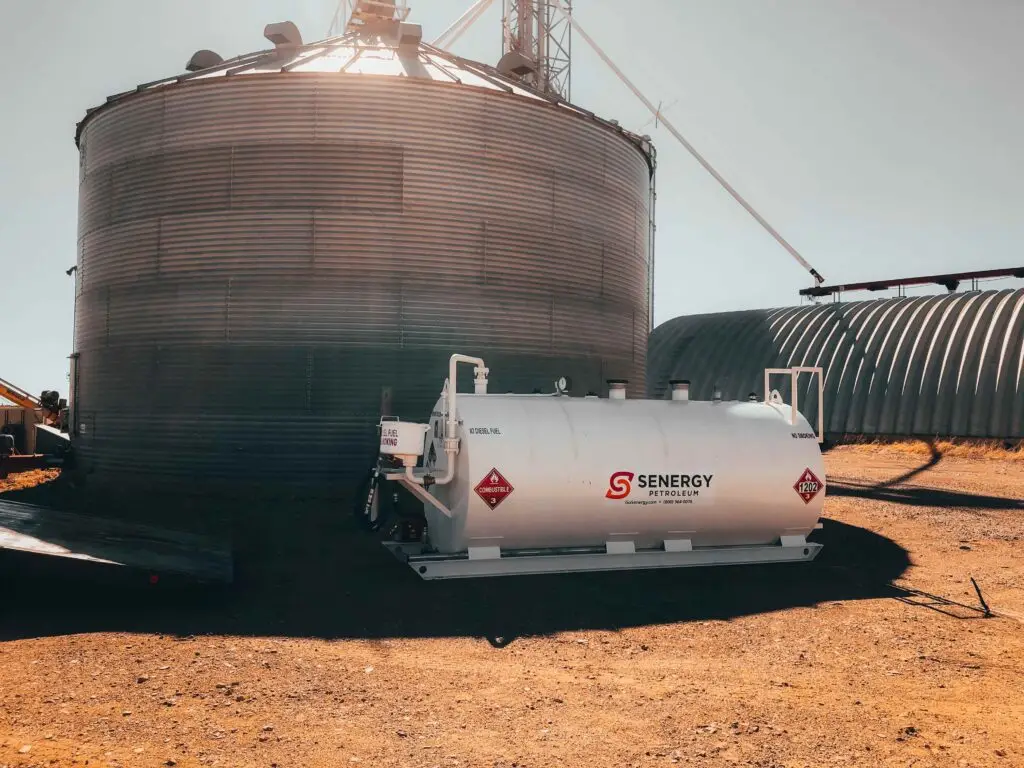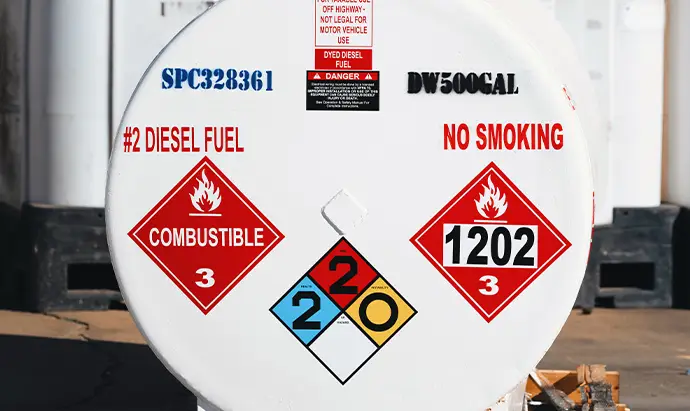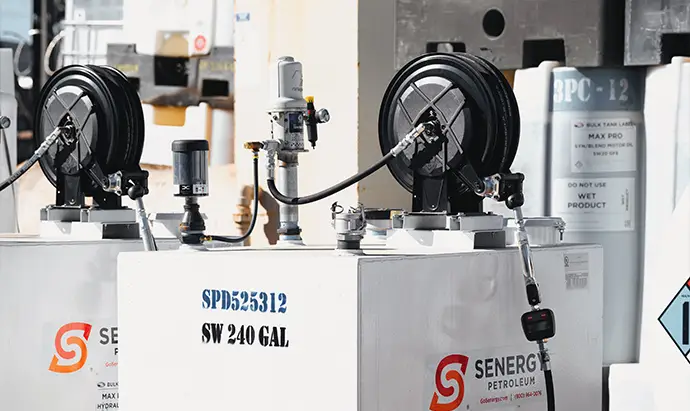As a commercial fuel buyer in the Southwest or Rockies, you know that your equipment’s performance is key to keeping operations running smoothly. But have you ever thought about how high humidity or water in your fuel tank can affect your machinery? In this article, we’ll break down why water contamination in fuel is a big issue, how it happens, and most importantly, what you can do to prevent and fix it.
Water in fuel is more common than you might think, especially in areas where humidity levels fluctuate, like the Southwest and Rockies. But what’s the big deal? Why should you care about water contamination?
Water doesn’t just magically appear in your fuel tank. It usually enters through two primary ways: condensation and environmental factors. When the temperature fluctuates, such as during warm days and cooler nights, condensation can form inside your tank. This is because warm air holds more moisture, and as temperatures drop, that moisture condenses into liquid water. If your tank is exposed to the outside elements, like through vents or fuel cap openings, water can enter through these small gaps.
So, what happens when water gets into your fuel? For starters, engine performance takes a hit. Water in fuel can cause engines to sputter, misfire, or even fail to start. You’ll notice decreased fuel efficiency, and if the problem persists, it could lead to engine damage. Water can clog fuel filters, gunk up fuel injectors, and damage seals. These all contribute to higher repair costs and more downtime, which means lost productivity for your business.
If water contamination isn’t addressed, it can lead to rust and corrosion in your fuel system. Fuel lines, injectors, and tanks can all deteriorate when exposed to water for too long. This type of damage is often costly and time-consuming to repair, so it’s best to prevent water from entering your system in the first place.
Now that you know how water can cause issues, it’s important to know how to spot it early. Here are some signs that water may be contaminating your fuel:
If your equipment starts running rough, sputtering, or stalling, it could be a sign that water has gotten into the fuel. Water disrupts the combustion process, which leads to poor engine performance. If this happens, it’s important to take action quickly.
Water in fuel can cause your engines to burn fuel less efficiently. If you notice a sudden drop in fuel economy or frequent refueling, water contamination might be to blame.
You might be able to spot water in your system by inspecting the fuel filter. If you see water collecting at the bottom of the filter, it’s a sure sign that your fuel is contaminated.
If your fuel filters are clogging more often than usual, water could be accumulating in your tank. The presence of water can cause debris to stick together, clogging filters and leading to more frequent maintenance.


While you can’t completely eliminate the risk of water in your fuel, there are several steps you can take to minimize the chances of contamination:
The best way to keep water out of your fuel system is by maintaining your fuel tanks properly. Regularly check and drain water from your fuel tanks. Many modern fuel systems have a drain valve at the bottom of the tank that allows you to remove any water that has accumulated. By cleaning your tanks on a regular basis, you’ll reduce the chances of water buildup.
Humidity and condensation are most likely to occur when there are big temperature swings. Try to store fuel tanks in temperature-stable areas or use insulated tanks to reduce condensation. The less fluctuation in temperature, the less moisture will build up inside the tank.
Fuel additives can make a huge difference in preventing water contamination. There are specific water dispersant additives that help prevent water from separating from the fuel, keeping the two from mixing and causing damage. These additives help dissolve water, making it easier to be burned off in the combustion process without causing issues.
Make sure your fuel tanks are tightly sealed to prevent moisture from entering through the vents or other openings. Sealing up these gaps is an easy way to keep unwanted water out of your system.
Testing for water in your fuel is an important preventive measure. Use water detection strips or fuel testers to periodically check for water contamination. Especially in regions with high humidity like the Southwest, it’s wise to test your fuel at least once every few months.

For those of us in the Southwest and Rockies, dealing with high humidity and temperature fluctuations is a part of life. However, by following these best practices, you can keep your equipment healthy and running smoothly, even in humid conditions.
Whether it’s draining your tank, replacing fuel filters, or testing for water contamination, regular maintenance is your best defense against the damaging effects of water in fuel. By staying proactive and keeping up with maintenance, you can avoid costly repairs and keep your equipment operating at peak efficiency.
If you’re ever in doubt about your fuel system’s health, don’t hesitate to reach out to a professional. Senergy Petroleum is here to help with fuel additives, maintenance recommendations, and expert advice to make sure your equipment stays in top shape.
Water in fuel tanks might seem like a small issue, but if left unchecked, it can cause major problems for your equipment. By being proactive about maintenance, using the right additives, and performing regular checks, you can prevent water from causing significant damage. Remember, a little attention now goes a long way in keeping your equipment running smoothly for years to come.

"*" indicates required fields